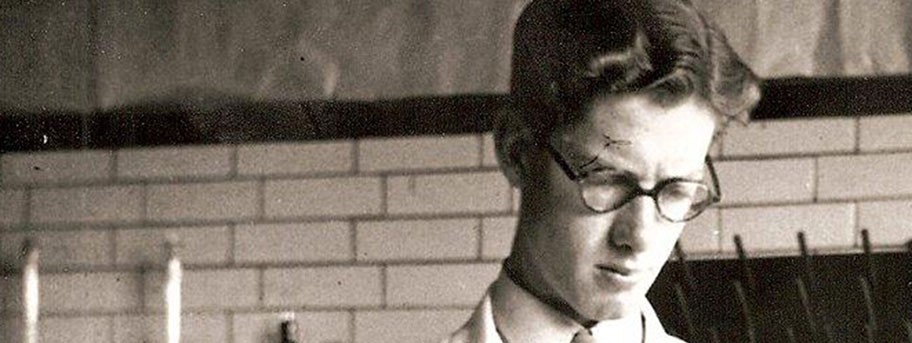The University of Nottingham
 Exchange online
Exchange online
Research Exchange
Nottingham’s role in scientific breakthrough of the century

The crucial work of Nottingham researchers in one of the greatest scientific breakthroughs of the 20th-century has been officially recognised for the first time.
Almost 60 years after scientists James D Watson and Francis Crick first unveiled the structure of DNA — the now iconic double helix — a new annotated and illustrated edition of a book written by one of the famous duo finally gives proper acknowledgement to the role of Nottingham researchers in paving the way to the discovery.
The Annotated and Illustrated Double Helix updates the original personal account by James D Watson, which was published in 1968, and dedicates a whole page to the work of a team at University College Nottingham, now The University of Nottingham.
The research, begun by JM Gulland FRS and DO Jordan, culminated in an experiment performed by young graduate student Mike Creeth. The experiment — an acid-based titration using the hydrodynamic method of viscometry — proved the existence of hydrogen bonds in DNA, the building blocks of all life.
The research was published in 1947, six years before Watson and Crick used it to help piece together the double helical structure of DNA in work which led to them being awarded the Nobel Prize in Medicine in 1963.
Steve Harding, Professor of Applied Biochemistry and Director of The University of Nottingham’s National Centre for Macromolecular Hydrodynamics, was Creeth’s last research fellow before he retired.
He said: “It has taken a long time but at last the work of Mike and the Nottingham team has finally been given proper credit and as a University we can be incredibly proud. It is quite remarkable how the work of the Nottingham team went largely unrecognised for so long.”
The updated book includes pictures of all the Nottingham team members, along with an image of a tragic rail crash that effectively ended the work of the group. When the 11.15am express train from Edinburgh to London derailed near Berwick at 12.45pm on October 26 1947, Gulland was killed along with 27 others.
Following the accident, Jordan moved to Adelaide in Australia while Creeth, after completing his PhD, moved to the Courtauld Institute in London.
Creeth’s PhD Thesis — also from 1947 — included a sketch of a model for DNA showing two sugar-phosphate chains held together by hydrogen bonds between the nucleotide bases and an expanded sketch of the sugar phosphate backbone with the phosphates on the outside of the chains.
Watson and Crick’s final model produced in 1953 (with the benefit of x-ray data from Rosalind Franklin) had almost the same structure — although the chains were not broken — and arranged in a double helix.
Professor Harding added: “A model for the DNA structure also appeared in Mike’s thesis which correctly had two chains linked together by hydrogen bonds. All that was missing was the helix. It is intriguing to speculate what might have happened if Gulland had not been killed in that train crash.”
Creeth himself, however, accepted that the Nottingham team did not have the experience in crystallography that proved vital to the final discovery of the structure but confessed to having the occasional ‘what if?’ moment.
“Of course I was impressed by what Watson and Crick had done. However, I must admit to a lingering thought of ‘why didn’t we think of that?’, although practically speaking there were many reasons why our research couldn’t have taken us to that conclusion.”
Sadly, Mike Creeth did not live to see the publication of the updated book and the official recognition of the work of he and his Nottingham colleagues — he passed away in 2010 at the age of 85.
The new edition titled The Annotated and Illustrated Double Helix by James D Watson, Edited by Alexander Gann and Jan Witkowski has been published by Simon and Schuster.
Leave a Reply
Other News

Top prize for quantum physicist
A University of Nottingham physicist has won a prestigious medal from the Institute of Physics for […]

Zero carbon HOUSE designed and built by students comes home
Design and construct a low cost, zero carbon, family starter home, transport it to Spain, build […]